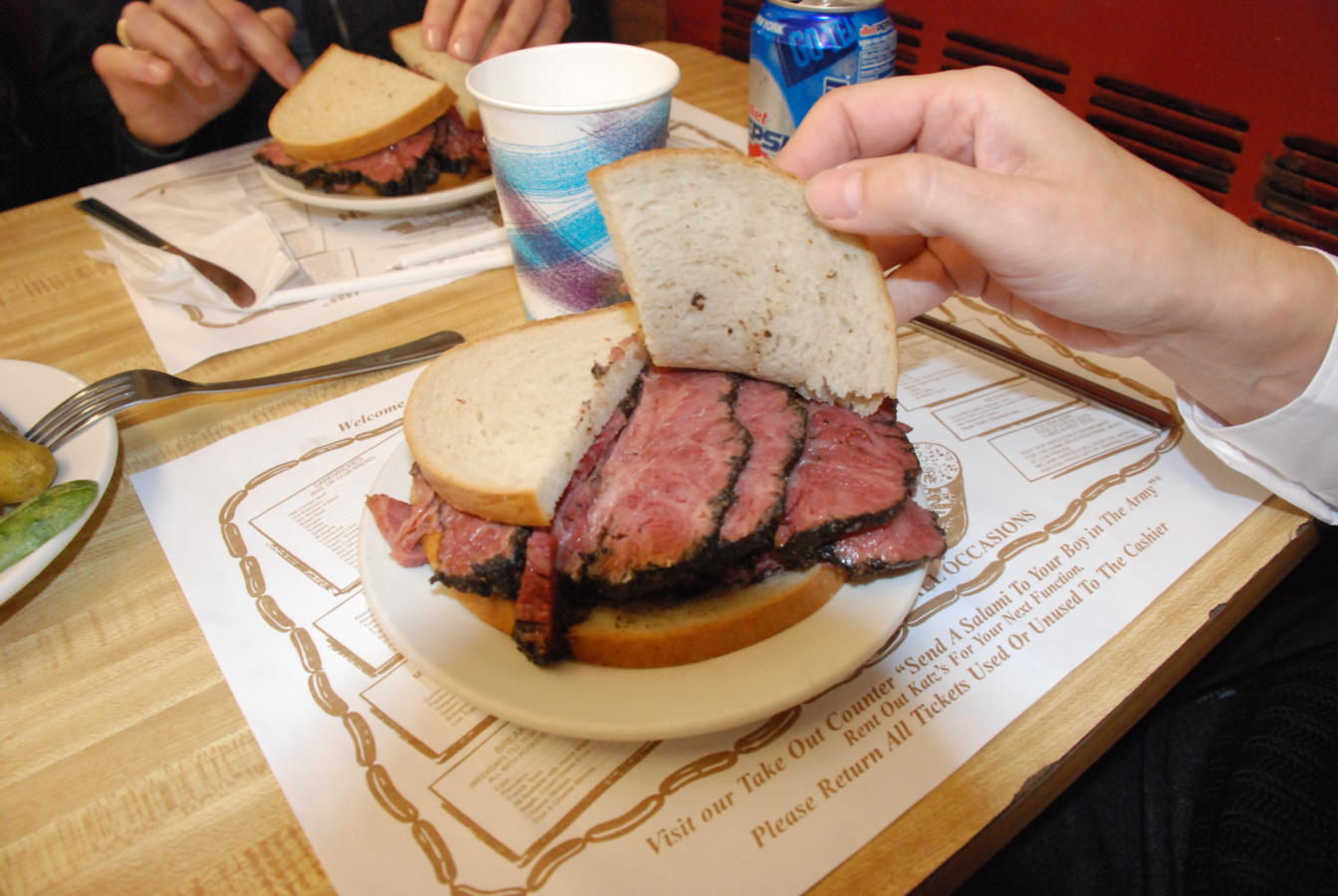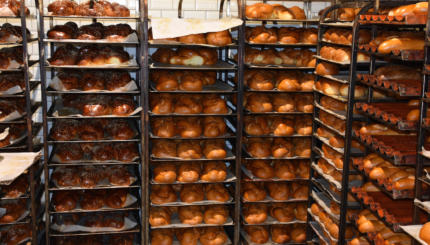A food is kosher if it follows Jewish dietary laws based on biblical food prohibitions, rabbinic expansions, and long-standing custom. But what does it mean for food to be kosher style?
As the name implies, kosher style food is food that does not achieve the same standard as strictly kosher food, but beyond that the meaning is ambiguous. When some people use the term, they mean foods traditionally eaten by Jews (usually Jews of Eastern European extraction) — bagels with lox, chicken noodle soup, deli sandwiches, etc. — but made without strictly kosher ingredients.
Others understand “kosher style” to mean that the food contains only ingredients that in theory could be kosher but have not in fact been certified kosher. For example, under this definition, a chicken noodle soup made with a chicken that did not come from a kosher slaughterer but that did not contain any dairy ingredients (since kashrut forbids the mixing of dairy with meat) would be considered a “kosher style” dish. In this case, the term applies equally to foods that are not traditional Jewish foods, like General Tsao’s chicken, that contain only ingredients that could theoretically be certified kosher.
According to either of these definitions, a cheeseburger would not be considered a kosher style food because no matter how strictly kosher the burger or the cheese, the two cannot be combined in a strictly kosher meal. Though here, too, there are exceptions. Some interpret the term “kosher style” to mean that only shellfish and pork are not present in the food, but meat and dairy may be mixed. And others will say that “kosher style” means food that Jews like to eat, even with the most taboo ingredients included (for instance, hotdogs made with pork).

Help us keep Jewish knowledge accessible to millions of people around the world.
Your donation to My Jewish Learning fuels endless journeys of Jewish discovery. With your help, My Jewish Learning can continue to provide nonstop opportunities for learning, connection and growth.
The concept of kosher style food became popular in early 20th century America because it allowed Jews to eat outside their homes in non-Jewish environments and still maintain a connection to the laws of kashrut. Today, the term is most commonly used by restaurants and caterers and it can mean that the food includes traditional (Ashkenazic) Jewish fare (blintzes, knishes, matzah ball soup, etc.) that has been prepared without supervision but using ingredients that would normally be acceptable, or that the foods are traditional but include forbidden ingredients. Since the term “kosher style” is ambiguous, if you are not sure about the food at an establishment, it is always a good idea to ask.



